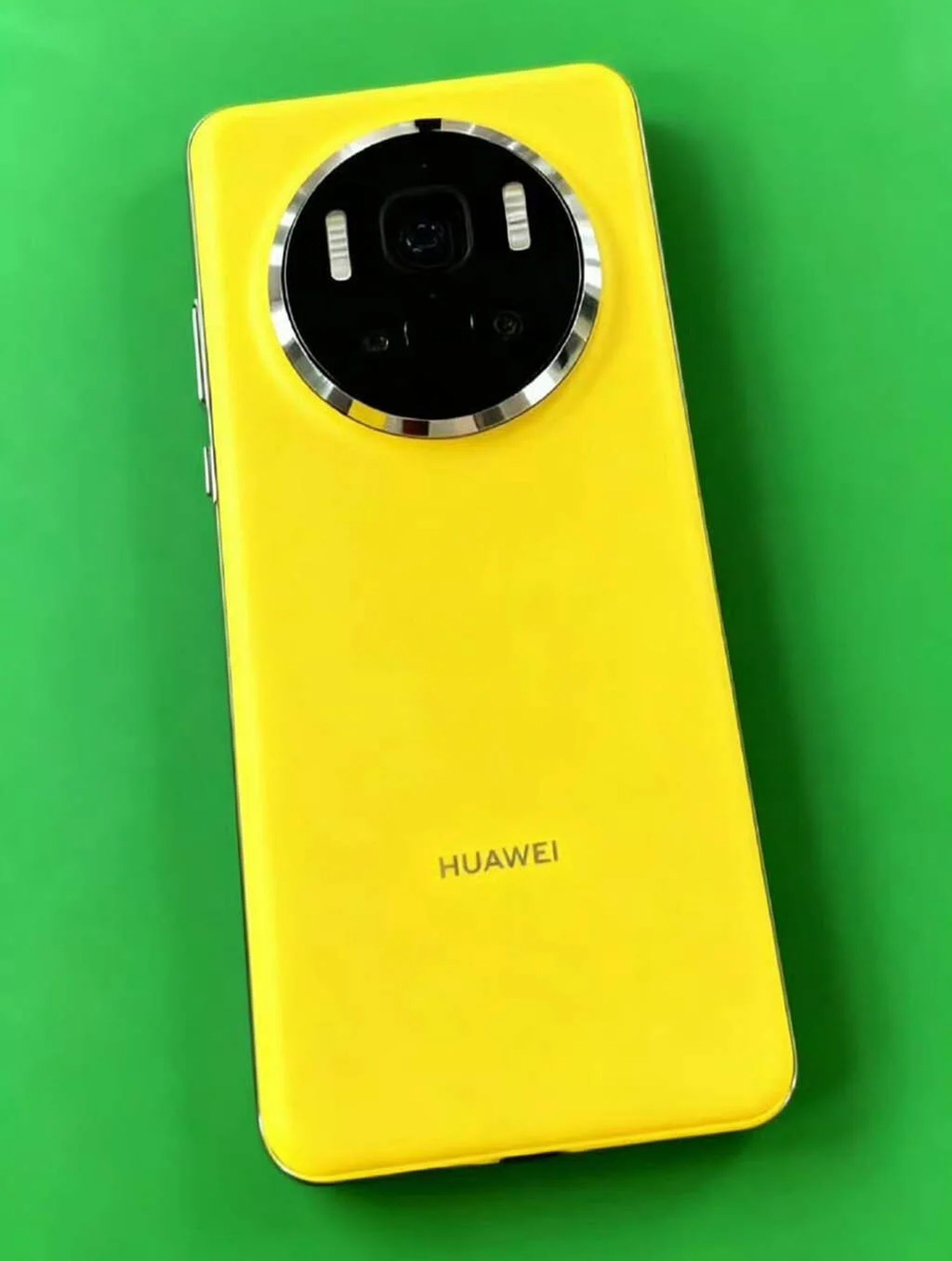Real-world photos of the upcoming Huawei Mate 80 series have been leaked online, providing the first clear look at the new flagship lineup’s design. The images, which appear to show the Mate 80 Pro model, reveal a redesigned circular camera module on the back, a departure from the design of the Mate 70 series.
A new camera layout
The new design features a triple-camera system arranged in a triangle pattern within the circular housing. The top lens is likely a periscope telephoto unit, with the two lenses below serving as the main and ultrawide cameras. Dual LED flash modules are positioned on the sides, and an additional unidentified sensor, possibly for color or light, is located next to the flashes. The entire camera island is encased in a metal-look ring.
This triangular arrangement is a notable change from the square camera layout of the Mate 70 Pro and may indicate space for upgraded optical components. The leaked photos show the device in bright yellow and black, though more color options are expected at launch. Another image suggests the standard Mate 80 model may have a different rear design, meaning the new camera layout could be exclusive to the Pro models.

What to expect from the Huawei Mate 80 series?
The new lineup is expected to include the Mate 80, Mate 80 Pro, and Mate 80 Pro+. Rumors suggest the series will feature:
- Up to 100W fast charging.
- New Kirin processors.
- A built-in cooling fan on at least one of the models.
A high-end Mate 80 RS variant is also rumored, which may include a titanium frame and a dual-layer OLED display.
Market competition and international availability
The Mate 80 series will launch into a competitive flagship market in China, facing off against new devices like the OnePlus 15 and the Xiaomi 16 series.
For international users, the new phones are expected to have the same limitations as the Mate 70 lineup. They are not expected to contain US-made components or have native support for standard Android applications, which may make importing them impractical for users who rely on the Google ecosystem.
Image credit: Weibo





